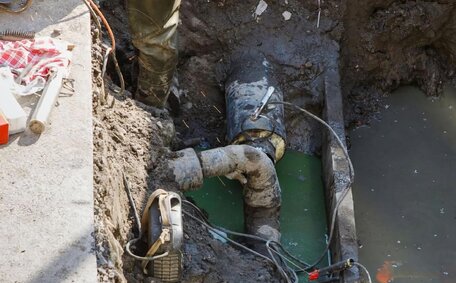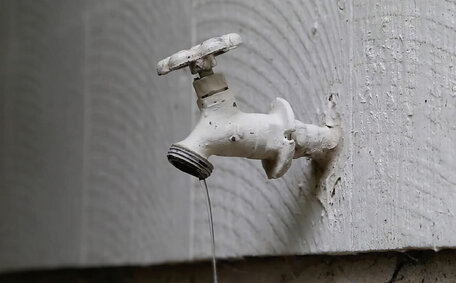Introduction to Solar Hot Water Systems
Solar water heating systems are an eco-friendly, cost-effective way to heat water for both residential and commercial use. The key components include solar collector panels, a pump, storage tank, and controller.
Solar hot water systems harness solar energy to heat water, storing it in an insulated tank for when you need it.
In a solar water heater, the sun heats the water, which then flows to a heat exchanger, transferring the heat into the storage tank. To maintain consistent water temperature, electric or gas boosters can activate during cloudy days or times of high usage.
Choosing a solar hot water system can reduce your energy bills and carbon emissions, offering a greener alternative to conventional electric water heaters. Long-term savings may offset the higher initial cost, significantly reducing energy expenditures and bolstering your property’s green profile.
How Do Solar Hot Water Systems Work?
Solar hot water systems utilise collector panels, often roof-mounted, to capture and convert the sun’s heat. These panels transform solar exposure into heat, containing more than basic tubes; they are filled with a heat transfer fluid that heats up as it flows through the panel.
The heat exchanger then transfers the warmth from the heated fluid to the water in your storage tank. This hot water is then available on demand through your pipes.
A pump circulates the heat transfer fluid in a closed loop system from the panels to the heat exchanger and back. A controller also helps to maximise the energy use and system efficiency.
Solar panel-based hot water systems also require a backup system to ensure hot water during cloudy periods or times of high use. Water heaters can rely on electricity or gas as a backup when necessary.
Professional installation and maintenance of your solar hot water system are essential to maximising long-term efficiency and energy transfer.
Types of Solar Collectors
There are two primary types of solar collectors used in solar hot water systems for both residential and commercial applications:
- Flat plate collectors: These are boxes covered with a dark flat plate absorber and a glass or polymer cover. These collectors have a flat surface design that efficiently captures heat to warm the circulating fluid. They are simple, reliable, and low maintenance.
- Evacuated tube collectors:These contain parallel rows of heat pipe glass tubes, each having a glass outer tube and metal inner tube attached to a fin. The vacuum between the tubes minimises heat loss, which can heat air or water efficiently. They can achieve higher temperatures but are more complex systems.
Solar thermal collectors generate more energy per square metre than standard PV systems, demonstrating high efficiency. Solar hot water systems, however, may require more roof space than comparable PV systems.
How much sunlight your location receives can influence the most suitable type of solar hot water system for your climate. Flat plate collectors lose performance in colder weather but still work effectively. Evacuated tubes tolerate cooler temperatures better but can overheat in very hot climates.
How Solar Thermal Differs from Solar PV
Solar thermal and PV (photovoltaic) systems both harness the sun’s energy, but they serve different purposes.
Harnessing solar energy to heat water, thermal systems use collectors that absorb sunlight, transferring it into your domestic water supply. They provide hot water for residential and commercial use and can generate thermal energy for space heating as well.
In contrast, solar PV systems use cells within panels to convert sunlight directly into electricity. This is typically fed back into the grid. They generate electrical energy to power lights, appliances and devices in buildings.
Key differences between the two systems include:
- Solar thermal systems heat your hot water and space, facilitating a cosy home environment. Solar PV generates electricity.
- Solar thermal systems require plumbing to transfer hot water. Solar PV systems generate usable power to feed into the grid or property’s wiring.
- Solar PV panels produce power evenly year-round as long as there is light. Solar thermal loses efficiency in very cold temperatures.
- Solar thermal systems achieving greater energy efficiency as the temperature difference between the collector and water increases. Solar PV efficiency stays relatively stable.
- Solar PV panels take up less roof space for an equivalent energy output.
Efficiency and Cost Savings
Solar hot water systems can be very efficient at harnessing the sun’s energy, providing your home with consistently hot water. A well-designed and sized system can provide 50-80% of a household’s yearly hot water needs, cutting energy costs and carbon emissions.
Factors such as orientation, climate, and system size influence solar hot water efficiency:
- Climate and sunlight hours
- Orientation and tilt of collectors
- System size and hot water demand
- Quality equipment and professional installation
Contemporary thermal system designs enable solar hot water systems to maintain an efficiency level above 50%, even in cooler climates. Coupled with gas or electric boosters, solar hot water systems reliably provide warmth throughout the year.
A typical household can save $250-$400 annually on energy bills by choosing a solar hot water system over traditional electric heating. With installation costs ranging from $4,000-$8,000, the payback period is under 10 years for most homes.
In Australia, solar hot water systems are pivotal in saving over 2 million tonnes of greenhouse gas emissions yearly while managing water heating needs. And solar thermal not only contributes to savings but also aligns with environmental stewardship, embodying savings environmental initiatives admire, meeting up to 5% of the country’s total energy demand for water heating.
Facing rising energy costs, switching to solar hot water systems is a prudent choice, promising savings for years and reducing environmental imprint.
Comparing Operating Costs
When comparing the operating costs of a solar hot water system to conventional water heating methods, solar hot water comes out ahead in the long run despite higher upfront installation costs.
Comparing 20-year lifespan costs, gas storage water heaters tally around $8,000 and electric heat pumps $15,000, whereas a solar hot water system with boosting costs only $11,000, offering substantial energy expenditure savings. Factoring in energy bill savings and potential government rebates reduces the cost difference further.
A medium-sized system, when compared to a heat pump or an electric water heating, does solar hot water justice by saving approximately 2 tonnes of carbon emissions annually. This represents a substantial environmental saving over 20 years.
Unlike solar power systems that generate income by feeding electricity back into the grid, solar hot water systems offer energy bill savings through 100% on-site usage. With electricity prices projected to keep rising substantially faster than inflation, solar thermal’s long-term savings will continue growing.
Over two decades of operation, a solar hot water system easily pays back its higher initial investment through thousands of dollars in cumulative energy savings.
Return on Investment
Investing in a solar hot water system can provide excellent return on investment over time. Despite a higher initial cost, solar hot water systems provide significant long-term savings.
A correctly sized solar hot water system can lead to energy bill savings exceeding $8,000 over two decades, compared to an electric water heater. Factoring in potential rebates and incentives, the payback period for solar hot water is less than 10 years for most homes.
Installing solar hot water systems also enhances the value your home commands on the market. Properties equipped with solar hot water systems can fetch a 4-8% higher sale price than similar homes without them. This can translate into tens of thousands in added resale value.
The return on investment can also be measured in terms of reduced carbon emissions. By reducing household energy consumption, a solar hot water system cuts carbon footprint by up to 2 tonnes per year.
The financial advantages of solar technology depend on system size and household use, yet it remains a sound investment for homeowners. Investing in solar hot water now locks in long-term savings given rising electricity prices, while protecting against future price hikes.
Environmental Benefits
The benefits solar hot water systems offer are substantial, harnessing solar energy instead of relying on fossil fuels, representing a cleaner method for hot water generation:
- Solar hot water systems create the necessary thermal energy for your home without the greenhouse gas emissions associated with gas or electric systems.
- Typical systems save 2+ tonnes of carbon emissions per household every year.
- Across Australia, solar hot water offsets over 2 million tonnes of emissions annually.
- With lower energy consumption, solar hot water reduces your property’s carbon footprint.
- Solar thermal meets up to 5% of Australia’s total energy demand for water heating.
Opting for solar hot water systems over traditional options taps into renewable energy, reducing environmental impact and fossil fuel reliance. This saves money while also demonstrating green credentials.
Choosing the Right System
Choosing the right solar hot water system for your abode involves weighing several pivotal factors:
- Climate and location - Sun exposure levels affect the system’s efficiency. Evacuated tube systems perform better in cooler climates but can overheat in very hot weather. Seek advice to identify the solar hot water system that’s most compatible with your local climate conditions.
- Household demand - Size your system based on your average daily hot water usage. Undersizing can lead to insufficient hot water, while oversizing is not cost-effective.
- Roof space and orientation - North-facing installation maximises efficiency. Check you have adequate unshaded roof space with the correct orientation.
- Upfront cost and payback - While the initial cost your budget faces is higher, lifetime savings of $250 - $400 per annum make solar hot water a judicious investment.
- Rebates and incentives - Federal and state government rebates can reduce system costs by up to $4,000. Your provider can advise eligibility.
It’s important to consult a trusted expert to find a system tailored to both your household’s hot water requirements and budget.






